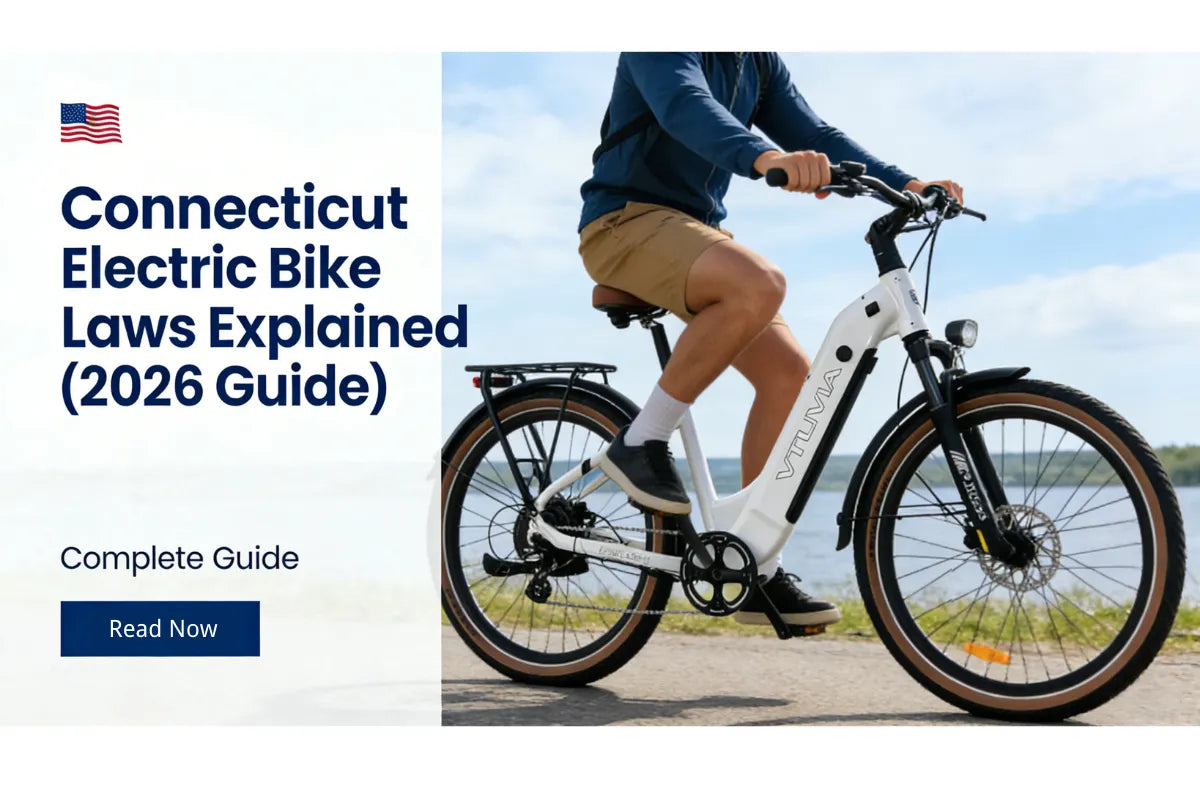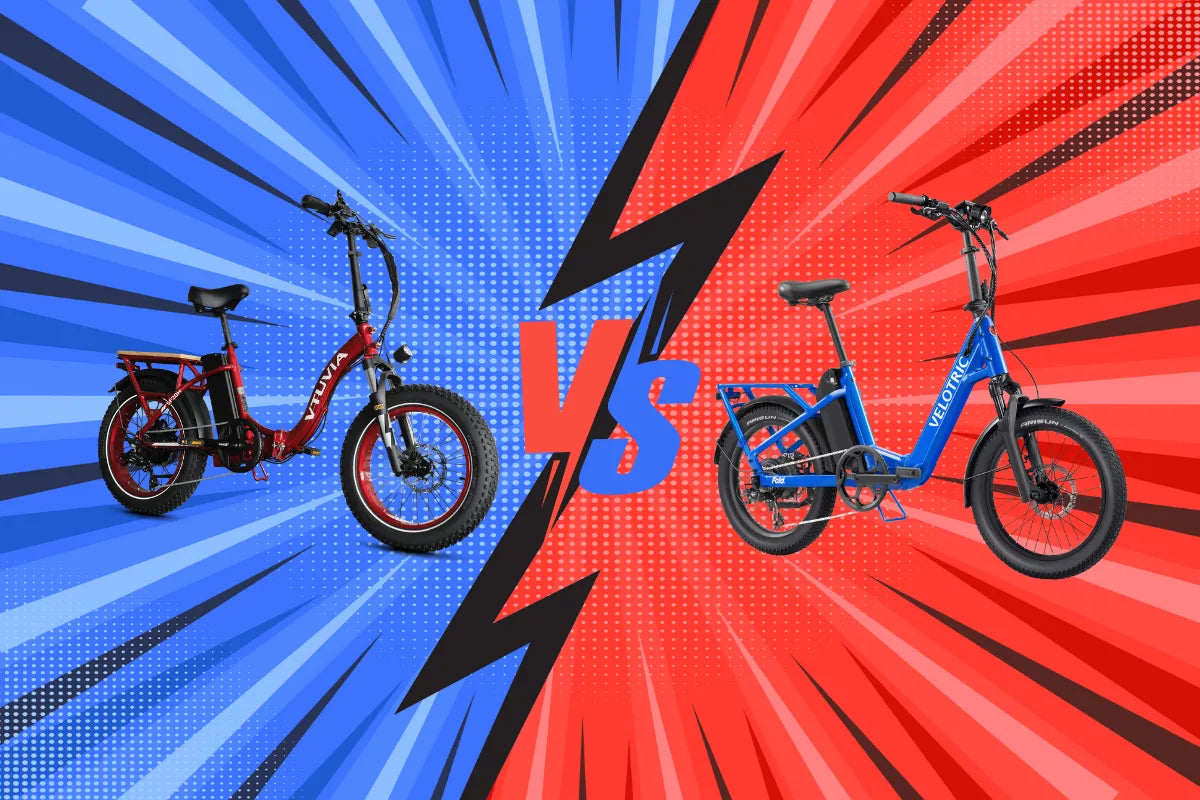Introduction
Hunting eBikes are revolutionizing the way hunters access remote locations, offering a stealthy, efficient, and eco-friendly alternative to traditional ATVs or long hikes. In this article, we’ll cover:
- What is a Hunting eBike?
- Why Hunters Are Choosing eBikes
- Potential Drawbacks of Hunting eBikes
- Best VTUVIA eBikes for Hunting
- Final Verdict: Is an eBike Worth It for Hunting?
What is a Hunting eBike?
A hunting eBike is a specially designed electric bike built for off-road use, allowing hunters to traverse rugged terrain, carry gear, and remain stealthy. These bikes typically feature powerful motors (750W-1000W), fat tires, and long-range batteries to handle backcountry trails.
Video from our customer -Dylan Meyers
Why Hunters Are Choosing eBikes
1. Silent & Scent-Free Travel
Traditional ATVs and gas-powered vehicles make noise and leave behind a fuel scent that can alert game animals. eBikes operate almost silently, allowing hunters to get closer without spooking deer, elk, or other prey.
2. Cover More Ground Faster
Walking for miles through rugged terrain can be exhausting, especially when carrying hunting gear. With a 750W or 1000W eBike, you can navigate hills, thick woods, and trails without wearing yourself out. Many hunting eBikes also come with fat tires to handle mud, snow, and sand.
3. Save Energy for the Hunt
Hunting requires patience and endurance. Instead of exhausting yourself on long hikes, you can save energy by riding an eBike, ensuring you’re sharp and focused when the moment to take a shot arrives.
4. Carry More Gear
Most hunting eBikes are equipped with rear racks, cargo trailers, and extra storage. This allows you to haul hunting gear, camping equipment, and even game meat more easily than on foot.

5. Access Restricted & Remote Areas
Many hunting areas prohibit gas-powered vehicles but allow eBikes. This means you can reach places that other hunters can’t, giving you an advantage in less crowded, prime hunting spots.
Potential Drawbacks of Hunting eBikes
1. Cost
A high-quality hunting eBike ranges from $1,500 to $5,000.
2. Battery Range & Charging
Most eBikes for hunting come with 48V 15Ah to 20Ah batteries, offering 30-60 miles of range depending on terrain and load. If you're planning a multi-day hunt, you may need extra batteries or a way to recharge in the wild.
3. Weight Limits
While eBikes can carry substantial gear, they still have weight limits (usually 300-400 lbs). You might need a cargo trailer attachment if you plan on hauling large game.
Best eBikes for Hunting
If you're considering an eBike for hunting, here are some top features to look for:
- Motor Power: 750W - 1000W for rough terrain
- Fat Tires: 4”+ for better traction on mud, snow, and sand
- Long Battery Life: 48V 15Ah+ for extended range
- Heavy-Duty Frame: Supports gear and game transport
- Quiet Hub or Mid-Drive Motor: Stealthy approach
Recommended Hunting eBikes for Sale:
- VTUVIA Reindeer 2.0 – Step-thru design for easy mounting with gear:
-

- ✓ Max speed: Class 2
- ✓ Battery range: Up to 70 miles
- ✓ Motor: 750W/ 85Nm
- ✓ Max Load: 400 lbs
- ✓ Tire: 26"*4.0" Fat Tires
- ✓ Warranty: 2-Year Warranty
- VTUVIA SN100– 750W motor, fat tires, and great range:

- ✓ Speed: Class 2
- ✓ Battery range: Up to 70 miles
- ✓ Motor: 750W/Peak 1200W/ 85Nm
- ✓ Max Load: 400 lbs
- ✓ Tire: 26"*4.0" Fat Tires
- ✓ Warranty: 2-Year Warranty
-
VTUVIA Gemini – 1000W dual battery setup for long hunts:

- ✓ Speed: Class 2
- ✓ Battery range: Up to 90 miles
- ✓ Motor: 1000W/Peak 1500W/ 100Nm
- ✓ Max Load: 400 lbs
- ✓ Tire: 26"*4.0" Fat Tires
- ✓ Warranty: 2-Year Warranty
Final Verdict: Is an eBike Worth It for Hunting?
For hunters who need stealth, efficiency, and better access to remote areas, an eBike is worth it. While the upfront cost is higher than traditional methods, the long-term benefits—less fatigue, expanded range, and better game access—make it a game-changer.
Would you use an eBike for your next hunt? Let us know in the comments!





Share:
VTUVIA Reindeer 2.0 vs 1.0
Why Electric Fat Tire Bikes are Good Choice for Adventurous Riders?